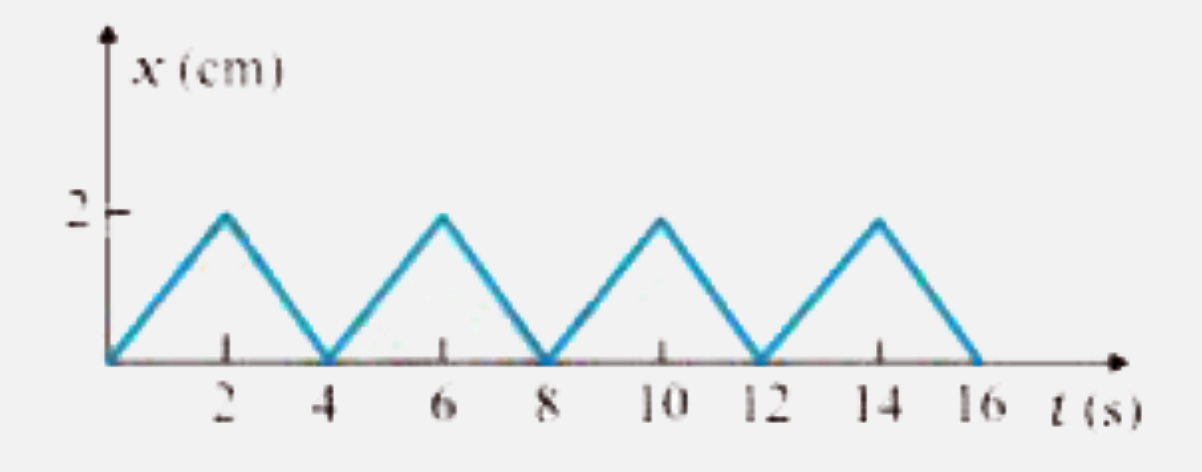A batsman hits back a ball straight in the direction of the bowler without changing its initial speed of 12ms−1 . If the mass of the ball is 0.15 kg , determine the impulse imparted to the ball . (Assume linear motion of the ball). Solution in Tamil
Change in momentum
=0.15×12−(−0.15×12)
= 3.6 Ns
Impulse = 3.6 Ns
in the direction from the batsman to the bowler. This is an example where the force on the ball by the batsman and the time of contact of the ball and the bat are difficult to know, but the impulse is readily calculated.
Topper's Solved these Questions
- BOOK - NCERT TAMILCHAPTER - LAW OF MOTIONEXERCISE - EXERCISE23videos
LAW OF MOTION
- BOOK - NCERT TAMILCHAPTER - LAW OF MOTIONEXERCISE - EXERCISE (ADDITIONAL EXERCISE)17videos
LAW OF MOTION
- BOOK - NCERT TAMILCHAPTER - KINETIC THEORY OF GASESEXERCISE - EVALUATION (Numerical Problems)8videos
KINETIC THEORY OF GASES
- BOOK - NCERT TAMILCHAPTER - LAWS OF MOTIONEXERCISE - EXERCISE (V. Numerical Problems)14videos
LAWS OF MOTION
Similar Questions
Give the magnitude and direction of the net force acting on
(a) a drop of rain falling down with a constant speed
(b) a crok of mass 10 g floating on water
(c) a kite skilfully held stationary in the sky
(d) a car moving with a constant velocity of 30kh/h on a rough road
(e) a high speed electron in space free from all gravitational objects and free of electric and magnetic fields.01:49View SolutionFigure shows the position-time graph of a body of mass 0.04 kg. Suggest a suitable physical context for this motion. What is the time between two consecutive impulses received by the body ? What is the magnitude of each impulse ?
 01:49View Solution
01:49View SolutionA fresh air is composed of nitrogen N2(78%) and oxygen O2(21%). Find the rms speed of N2 and O2 at 20∘C.
03:06View SolutionA force of 50N act on the object of mass 20 kg. shown in the figure. Calculate the acceleration of the object in x and y directions
 02:05View Solution
02:05View SolutionA batsman hits back a ball straight in the direction of the bowler without changing its initial speed of 12 ms^(-1) . If the mass of the ball is 0.15 kg , determine the impulse imparted to the ball . (Assume linear motion of the ball).
04:17View Solutionकोई बल्लेबाज किसी गेंद की आरंभिक चलल जो 12ms−1 है, में बिना परिवर्तन किये उस पर हिट लगाकर सीधे गेंदबाज की दिशा में वापस भेज देता है । यदि गेंद की संहिति 0.15kg है, तो गेंद को दिया गया आवेग ज्ञात कीजिये । (गेंद की गति रैखिक मानिये)।
03:06View SolutionA batsman hits back a ball straight in the direction of the bowler without changing its initial speed of 12 ms−1. If the mass of the ball is 0.5 kg., determine the impulse imparted to the ball. (Assume linear motion of the ball)
05:20View SolutionA batsman hits back a ball of mass 0.2 kg, straight in the direction of the bowler without chaning its initial speed of 6 m/s. What is the impulse impated to the ball?
03:30View SolutionA batsman hits back a ball straight in the direction of the bowler without changing its initial speed of 12 m cdot s^(-1) . If the mass of the ball is 0.15 kg, determine the impulse imparted to the ball.(Assume linear motion of the ball )
02:09View SolutionA batsman hits back a ball straight in the direction of the bowler without changing its initial speed of 12 ms^(-1) . If the mass of the ball is 0.5 kg., determine the impulse imparted to the ball. (Assume linear motion of the ball)
05:35View SolutionA batsman hits back a ball straight in the direction of the bowler without changing its initial speed of 15m/s.If the mass of ball is 0.1kg then impulse imparted to the ball will be
02:55View SolutionA batsman hits back a ball straight in the direction of the bowler without changing its initial speed of12ms−1 . If the mass of the ball is 0.15 kg, determine the impulse imparted to the ball. (Assume linear motion of the ball)
03:03View SolutionA batsman hits back a ball straight in the direction of the bowler without changing its initial speed of12ms−1 . If the mass of the ball is 0.15 kg, determine the impulse imparted to the ball. (Assume linear motion of the ball)
02:55View SolutionA batsman hits back a ball straight in the direction of the bowler without changing its initial speed of 12 m s^(-1) . If the mass of the ball is 0.15 kg, determine the impulse imparted to the ball. (Assume linear motion of the ball)
02:20View SolutionA batsman hits back a ball straight in the direction of the bowler without changing its initial speed of12ms−1 . If the mass of the ball is 0.15 kg, determine the impulse imparted to the ball. (Assume linear motion of the ball)
02:05View SolutionA batsman hits back a ball straight in the direction of the bowler without changing its initial speed of 12ms−1 . If the mass of the ball is 0.15 kg , determine the impulse imparted to the ball . (Assume linear motion of the ball).
View Solution
